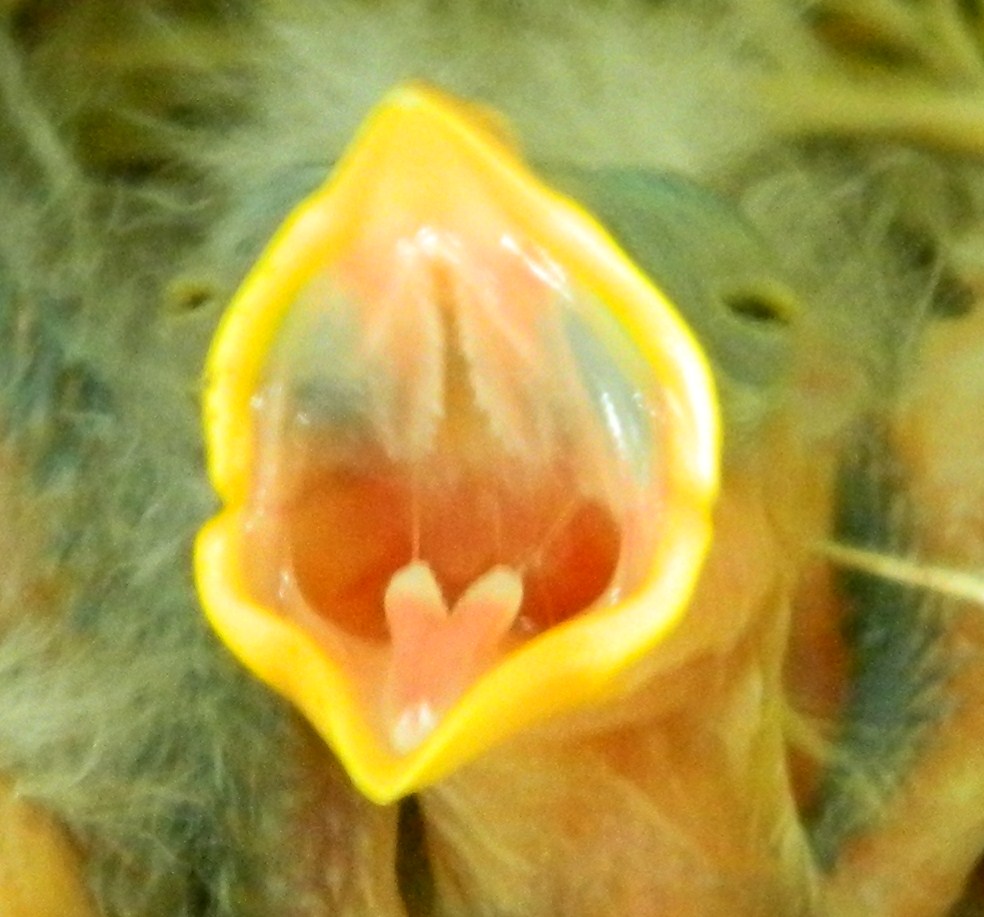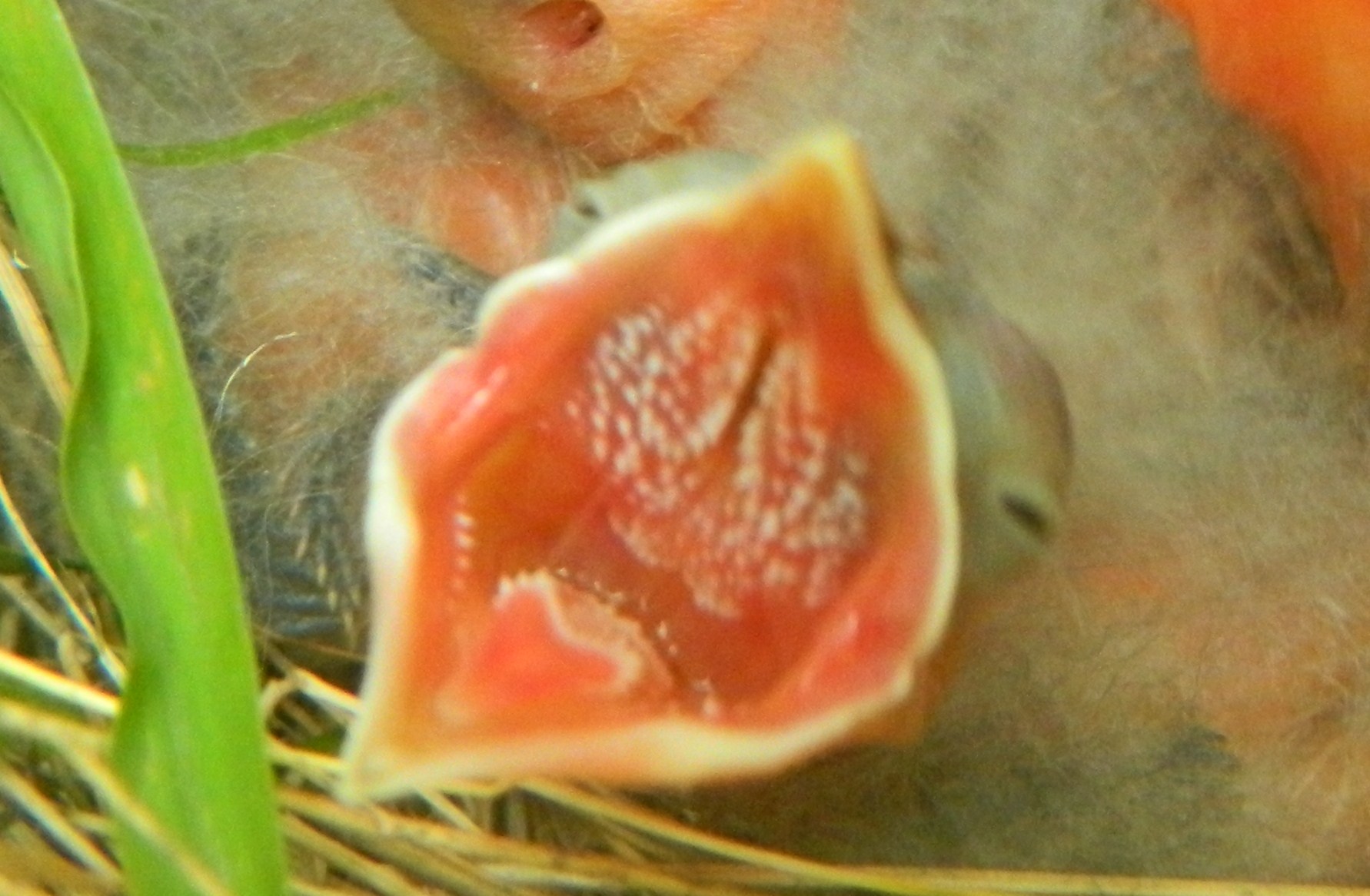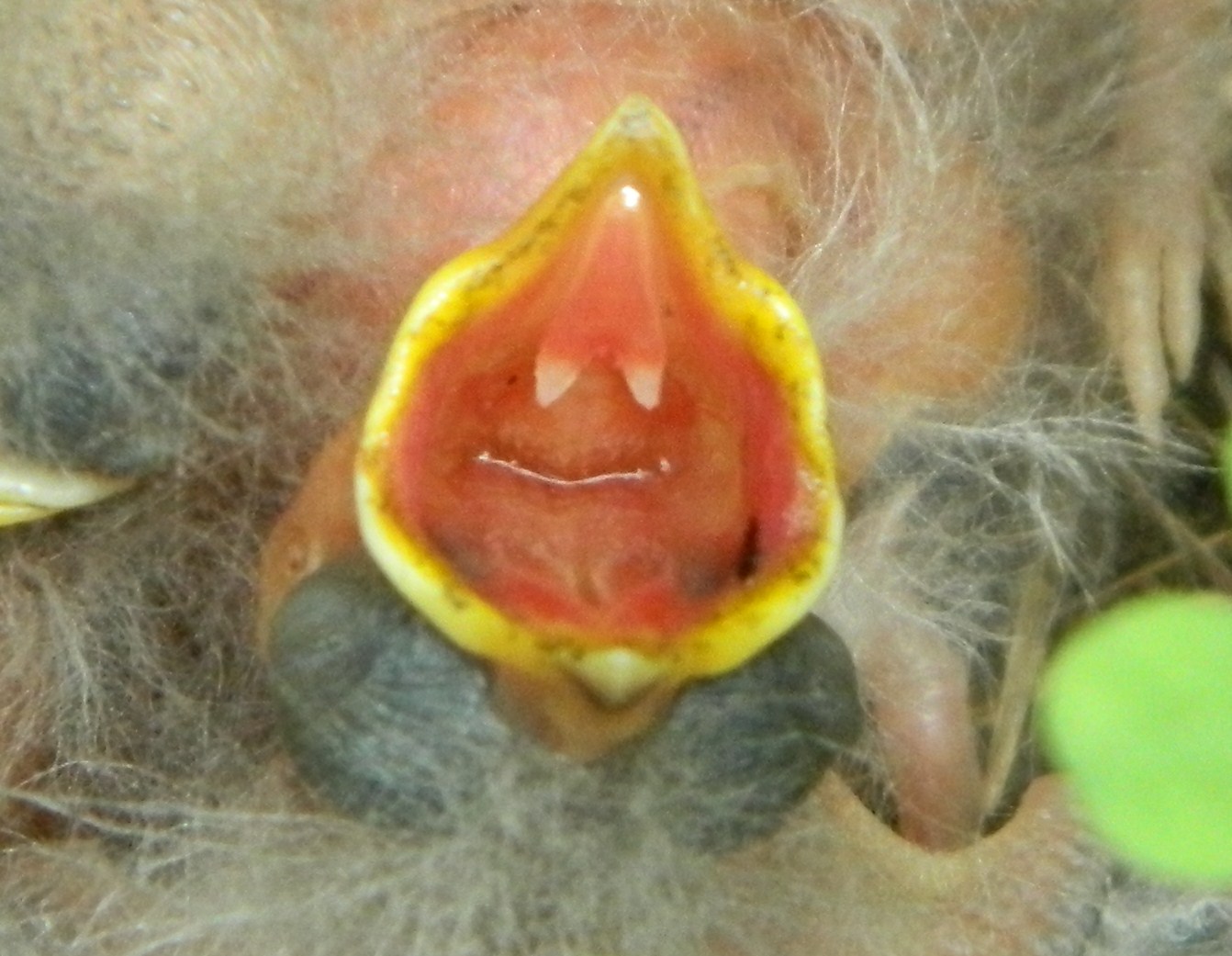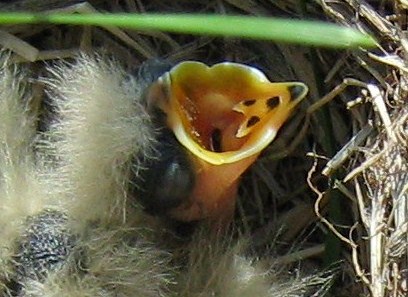This series highlights the fascinating and marvelous ecology of grassland bird nesting, written by Madison Audubon education director Carolyn Byers. Click here for all of the Into the Nest posts.
Now that the chicks have hatched, they are in almost constant need of food. Grassland bird chicks generally fledge in about 10 days, and their growth rates are incredible. Parents must balance all of their chicks’ needs - food, thermoregulation, protection from predators, and shelter- to maximize their chances of survival.
These grasshopper sparrow chicks are just hours old, and HUNGRY. Photo by Carolyn Byers
The nest videos we collected contain an unbelievable wealth of information, if you’re willing to sit patiently with a computer. I carefully watched the video footage of a bobolink nest with three day old chicks. In one 24 hour period, there were 158 food deliveries to the nest. The male made 86 trips, while the female made 72. With each feeding, the parents must to search for and catch an appropriate food item, and then bring it back to the nest without being observed by predators. Bobolink chicks remain at the nest for 10-11 days, and require more food as they grow. It makes me grateful that I can simply pick tomatoes in my garden or make a quick run to the grocery store!
Bobolink parents make nearly 160 food deliveries to the nest in one day- those chicks keep them busy!
Most grassland birds feed their chicks exclusively protein: invertebrates like crickets, grasshoppers, grubs, caterpillars and spiders- yuuum!
In some species, the female does most or all of the feeding (eastern meadowlark, dickcissel). In others, both the male and female will help feed the chicks (grasshopper, henslow’s, savannah sparrow, bobolink). Sometimes both parents will be foraging and feeding chicks at the same time, leaving the chicks alone in the nest. If weather is poor and chicks require heat or shelter, the female will often brood or shade while the male feeds.
A female bobolink with food for her chicks. Photo by Carolyn Byers
When baby birds are hungry, they beg for food from their parents. Chicks hold their head up high, cheep, and open their mouth as wide as they can to show off their gape. The “gape” is the interior of a bird’s mouth- and it is often very brightly colored on baby birds. Red, orange, yellow and pink are common gape colors. Some birds also have spots or other markings to add contrast. This gaping behavior and the high-contrast colors trigger feeding behavior in parents. They can’t ignore a chick gaping in their nest, and are biologically wired to put food into gaping mouths.
Baby birds have similar gape patterns: a pinkish mouth surrounded by a yellow edge. Most have a slight variation that can aid in identifying nestlings: dickcissel have bluish spots inside their mouth, bobolink have grayish spots. Some, like horned larks, have very dramatic spots that are easy to recognize.
Left to right: The unique gapes of dickcissel, eastern meadowlark, and grasshopper sparrow chicks. Photos by Carolyn Byers
Left to right: horned lark and grasshopper sparrow gapes. Photos by Carolyn Byers
Gaping is what scientists call an “honest signal”. Baby birds gape and beg harder when they are very hungry, and are less enthusiastic when they are only moderately hungry. Chicks that are full and satisfied sit quietly in the nest. This makes life easier for parents: they keep putting food into the mouth that is hungriest, and only stop when all of the chicks are quiet.
Here we have two hungry song sparrow chicks, and two that are fully and content (for the moment, anyway). Photo by Carolyn Byers
This begging behavior does change slightly as chicks mature. Young chicks, about three days old or less, will beg for any disturbance at the nest. As chicks age, they are able to differentiate between their parents at the nest and other activity (say, a scientist checking the nest). These older chicks hunker down quietly in the nest and hold still when something other than their parent comes visiting.
What goes in must come out: our next post will be on one of my favorite topics- poop!
Video clips
First, A male bobolink feeds the chicks in his nest. All of them beg enthusiastically, which means they are pretty hungry.
Next, both the male and female bobolink are attending this nest. You can see the grass in front of the nest move as each adult perches on it before dropping down to the nest. The male brings a butterfly or moth, and the female helps him break it up and feed it to the chicks. After feeding, the male leaves the nest and the female begins to brood.
* * * * * * * * * * * * * * * * * * * * * * * *
Dickcissels are a beautiful, migratory grassland bird that benefits from the Migratory Bird Treaty Act. Photo by Kelly Colgan Azar
This summer, to celebrate Year of the Birdand 100 years of bird conservation under the Migratory Bird Treaty Act, we’ll be posting regular articles about grassland bird nesting ecology. My M.S. thesis focused on grassland bird nesting ecology, and I’m excited to share my knowledge—and stories from the field- with you! We’ll go into the nest to learn about chick behavior, adult sleep habits, feeding and fledging. We’ll discuss predation and learn about how adult birds respond to different predators. You’ll get to see beautiful photos of nests, eggs, and chicks, as well as video footage straight from the nest! Best of all, the next time you’re out hiking in your favorite Wisconsin prairie, you’ll feel a bit closer to the birds you love.
If you’re interested in reading more and can’t wait for the next post, you can read more about my thesis work here.
Stay tuned for our next edition of Into the Nest, coming soon!
Written by Carolyn Byers, Madison Audubon education director
Video credit:
Nest footage was generously provided by the U.S. Geological Survey, Wisconsin Cooperative Wildlife Research Unit, Madison, WI. Check out their website to learn more!















